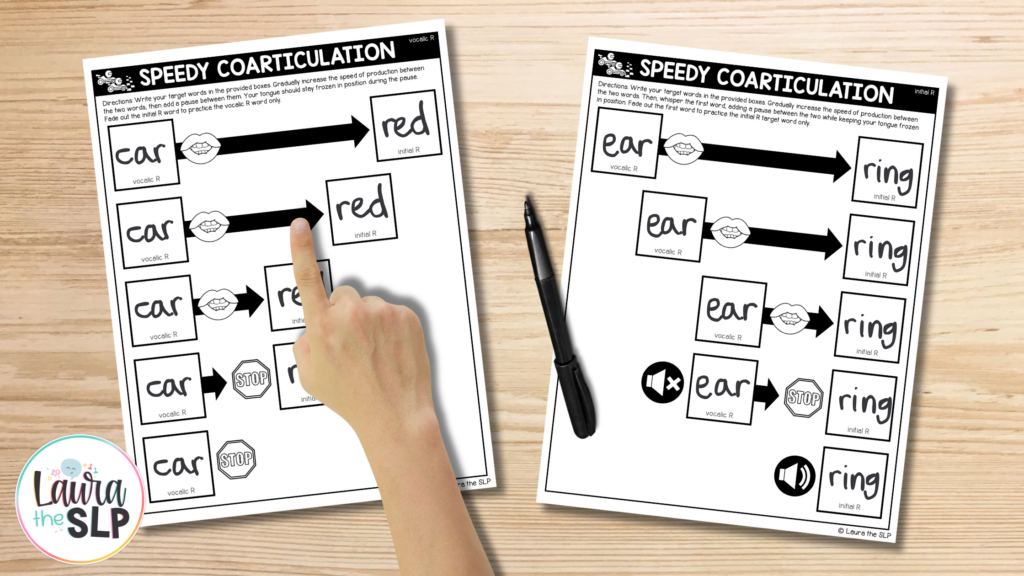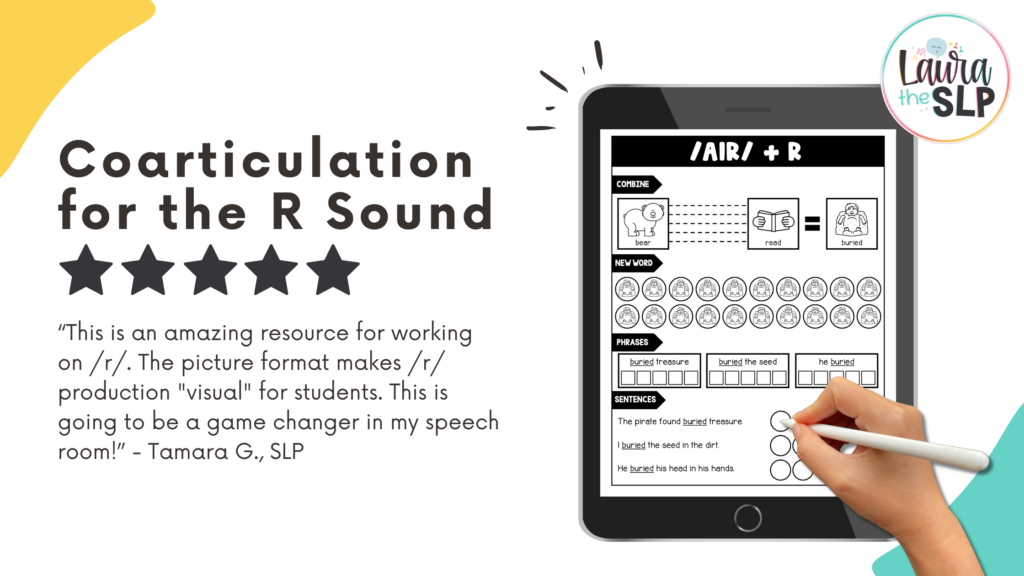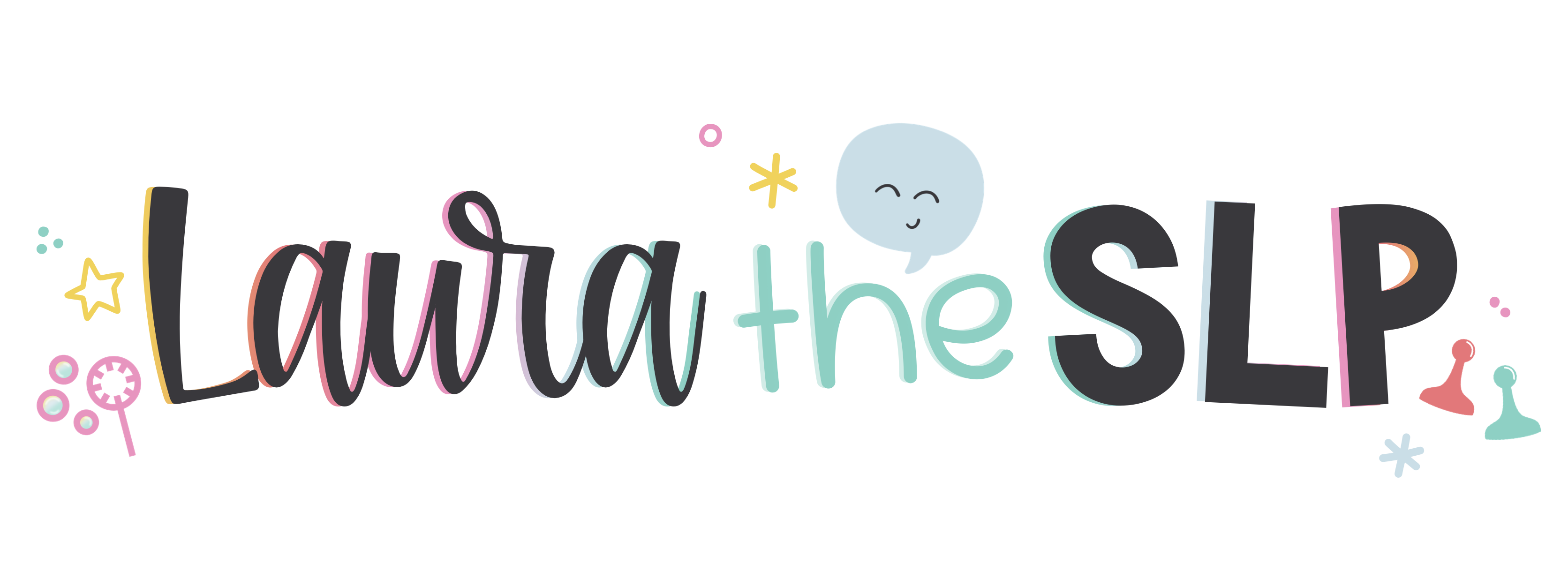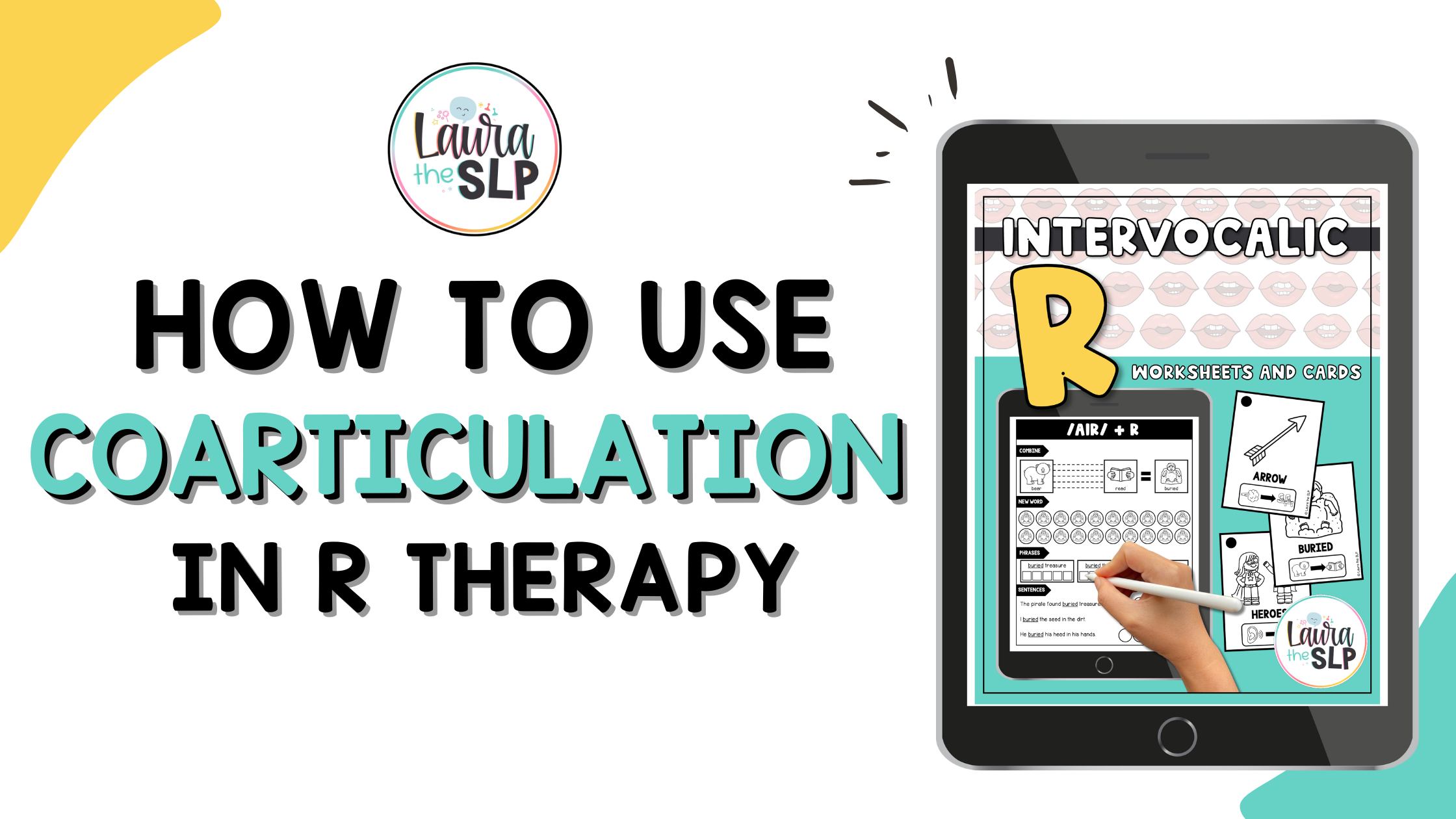How to Use Coarticulation in R Therapy
Coarticulation can be an extremely powerful tool when working on the “R” sound in speech therapy. If you don’t already have this strategy in your toolbox, I promise you that you’re going to find it helpful for potentially any R client on your caseload!
Coarticulation is when a phoneme is influenced by the sounds around it. The phoneme may take on qualities of the sound preceding or proceeding it. An example would be the word “room.” Pretend you are going to say that word – do you feel your lips rounding before you even begin speaking? That’s because your mouth is getting ready to produce the rounded vowel “oo” after the R.
This allows for efficient transitions between articulatory movements when speaking, making speech sound smooth rather than choppy. Essentially, coarticulation is why human speech doesn’t sound robotic!
One of the reasons why coarticulation can be so powerful in R therapy is because we can use it to elicit any type of R by building upon the client’s existing strengths. If a client is successful with producing initial R, it can be used to elicit any vocalic R. Similarly, if your client is more successful with final vocalic R, coarticulation can be used to elicit initial R.
Here are the steps that I take when using coarticulation, depending upon what I am trying to elicit:

USING INITIAL R TO ELICIT vocalic R
- Choose an initial R target word that the child is successful with, ex. “red”
- Choose the final vocalic R target you are attempting to elicit (this could be any vowel-controlled R, ex. air, ar, ear, er, ire, or). Let’s use “car” (final vocalic AR) for our example.
- Stretch out the R sound between the two words, e.g. “carrrrrrred.” There should be no breaks or pausing yet.
- Gradually increase the speed of production between the two words, e.g. “carrred.”
- Add a pause between the two words, e.g. “car…red.”
- Eliminate the initial R word to practice the vocalic R only, e.g. “car.”
USING VOCALIC R TO ELICIT Initial R
- Choose a final vocalic R target word that the child is successful with, ex. “ear.”
- Choose the initial R word you are trying to elicit. Let’s use “ring” for our example.
- Stretch out the R sound between the two words, e.g. “earrrrrring.” There should be no pausing yet.
- Gradually increase the speed of production between the two words, e.g. “earring.”
- Whisper or “mouth” the first word, then pause before saying the initial R word aloud. For example, when you whisper “ear” then pause, your tongue should be ‘frozen’ in the position of the final R and be ready to produce initial R in “ring.”
- Eliminate the vocalic R word and practice the initial R only, e.g. “ring.”
To use this strategy with ANY target words, I’ve created a coarticulation freebie that utilizes these steps. Simply fill in the blanks with the words you want and watch coarticulation magic happen in your therapy room!
This freebie is exclusively part of my Freebies Library – so you make sure you sign up for my newsletter to get access to the password!
I’ve also created a resource that utilizes coarticulation to my advantage. I have intentionally selected intervocalic R words (think “cherry” or “earring“) that can build on those strengths. The intervocalic R words are then built upon by practicing at the word, phrase, and sentence level to quickly progress along the articulation hierarchy.
Think of it like a word puzzle. For example, “ear” + “ring” = earring. The single word is then practiced several times, then quickly chained into phrases and sentences. And YES, you can accomplish word to sentence level all in one session! (It actually supports faster generalization).
Grab my Coarticulation for R Sound resource below! It’s available on Teachers Pay Teachers and in my website shop.

Thanks for reading!

